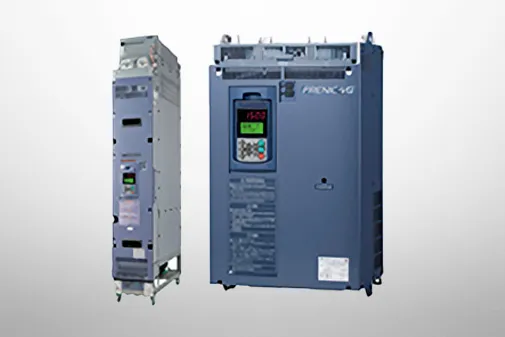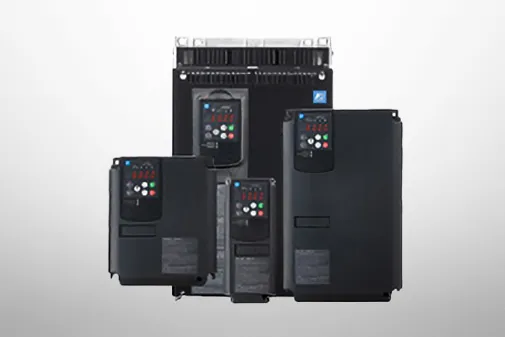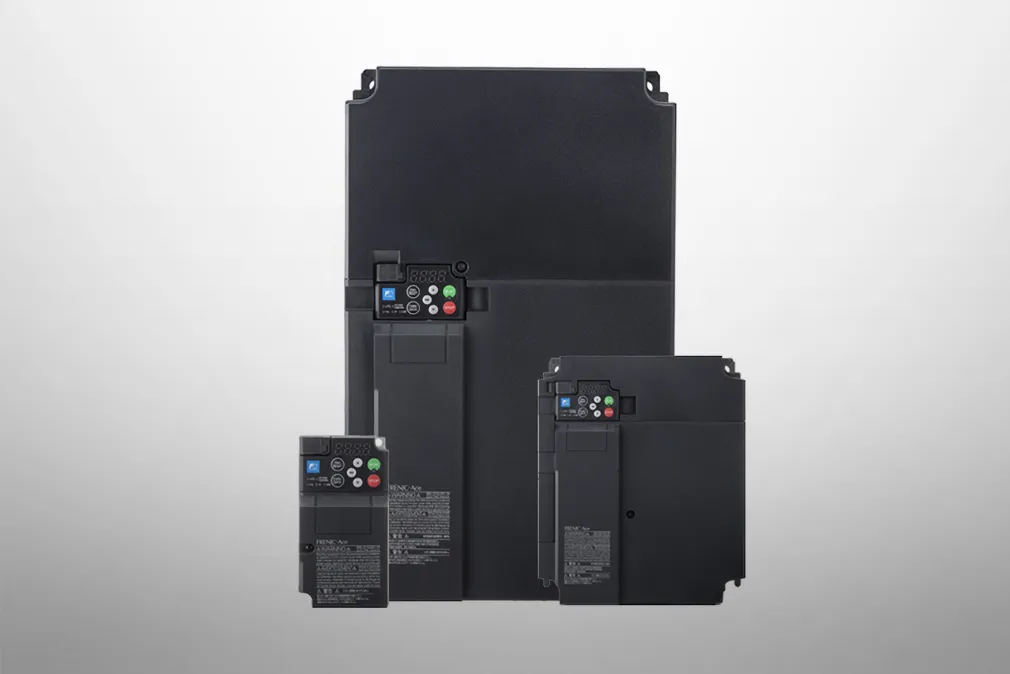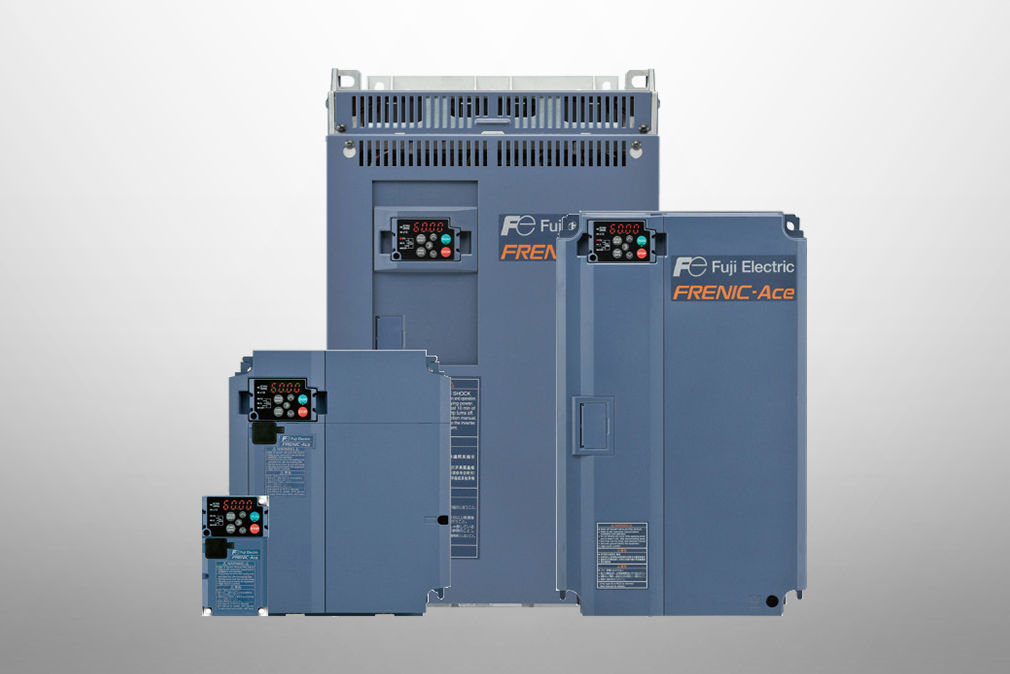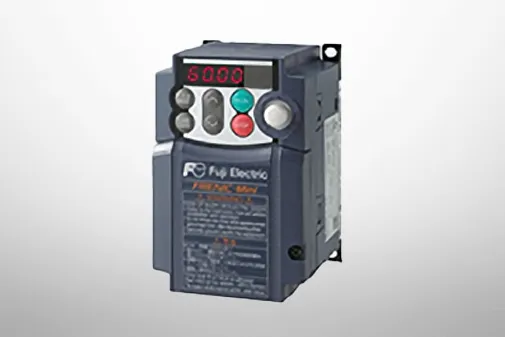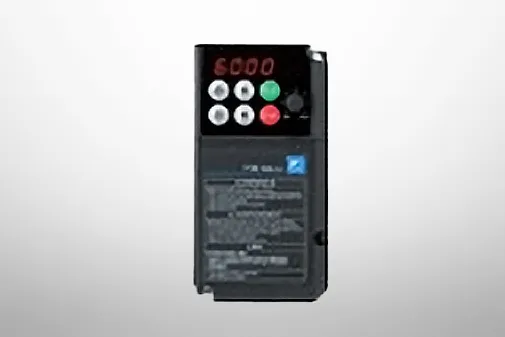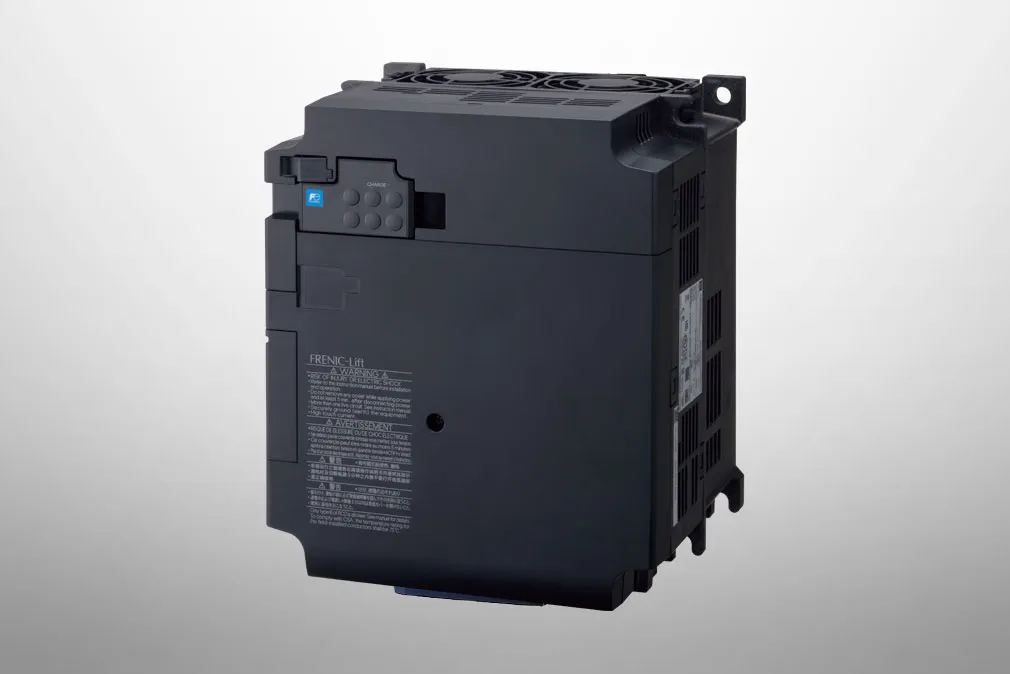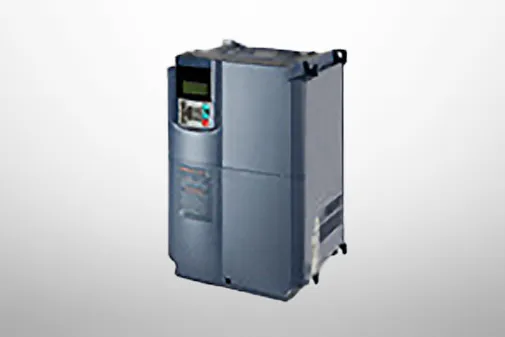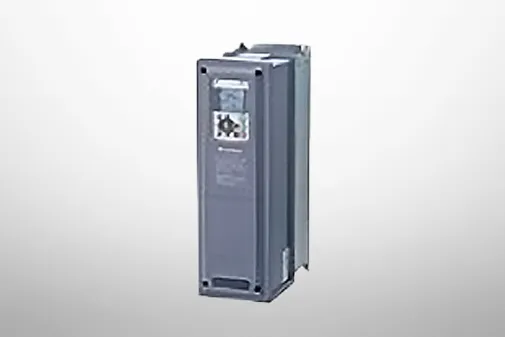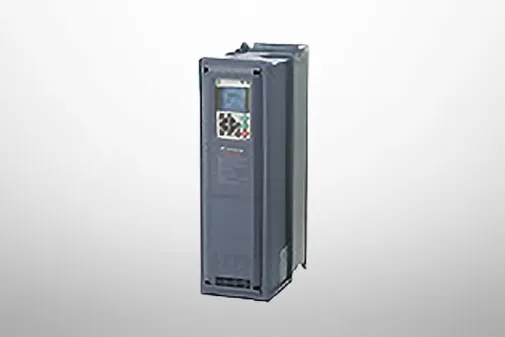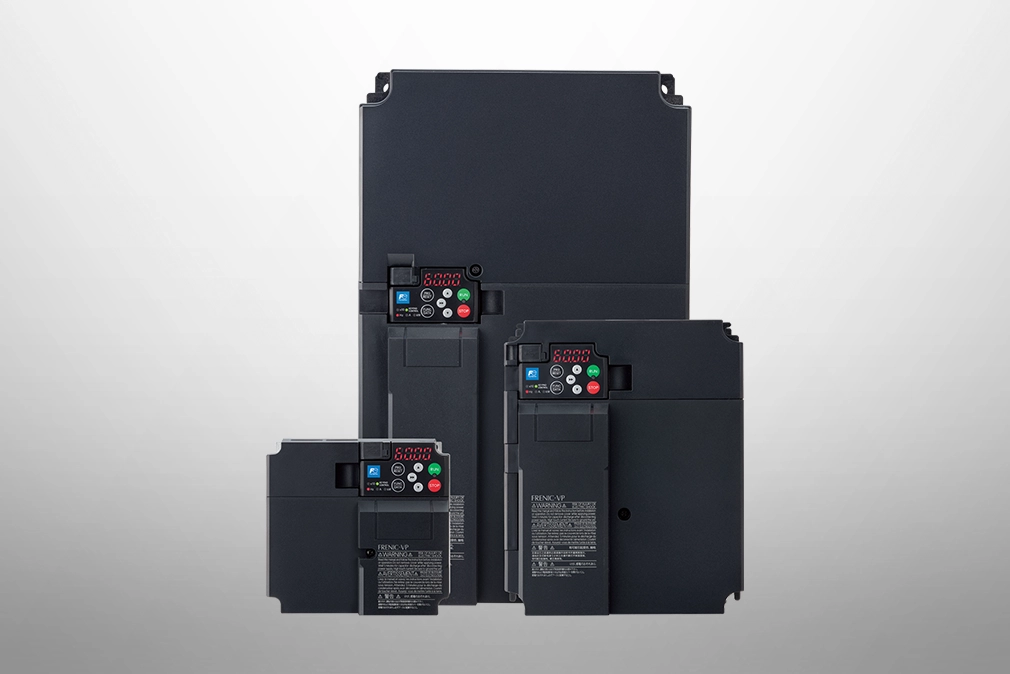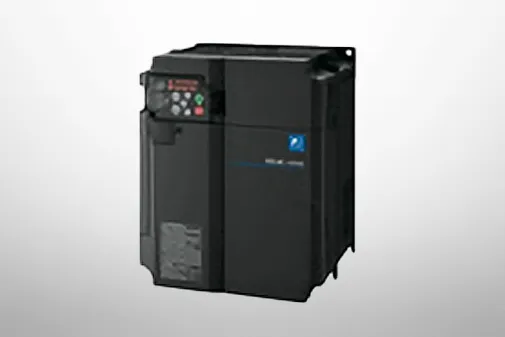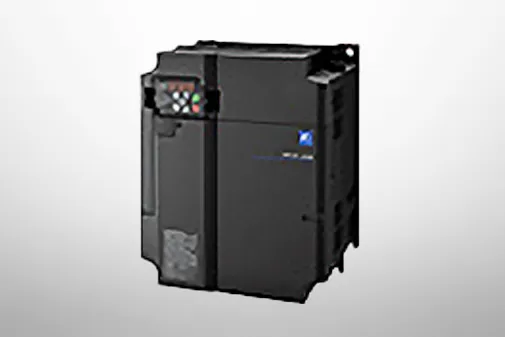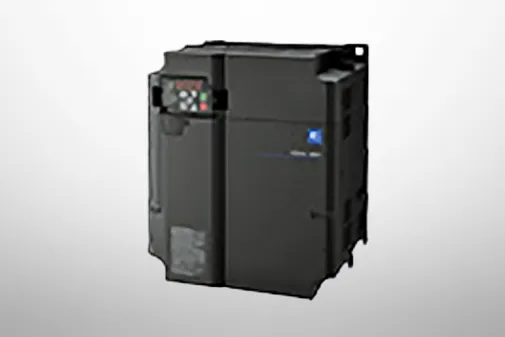FRENIC-Ace (E2)
Standard Specifications | Three-phase 200V
-
Standard Specifications Three-phase 200V
Basic type (Three phase 200V)
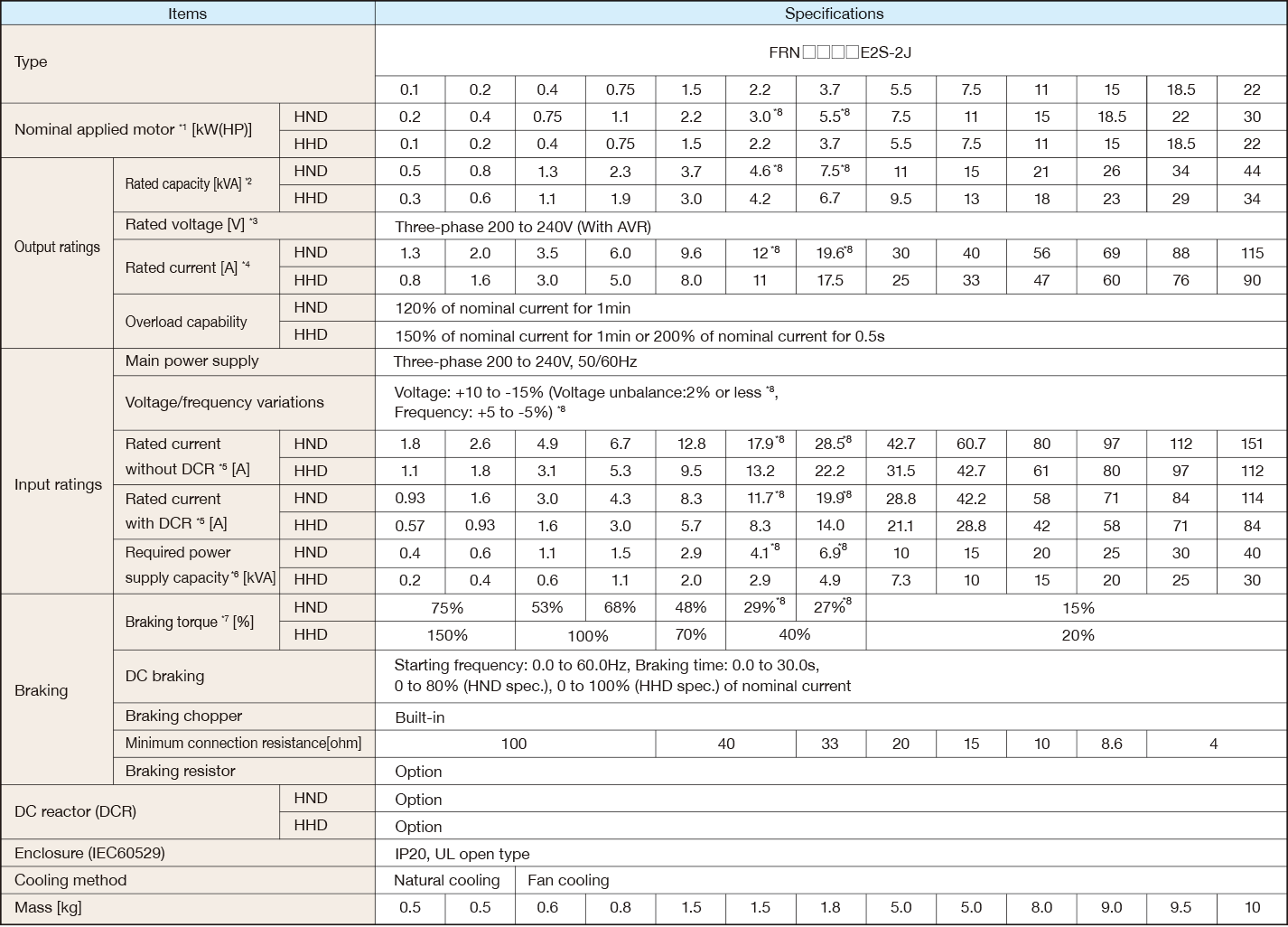
-
Note1
-
Fuji 4-pole standard motor. At the selection of the inverter rating, consider not only the rating capacity(kW) is enough but also inverter output current is larger than selected the motor's nominal current.
-
Note2
-
Rated capacity is calculated by assuming the output rated voltage as 220 V.
-
Note3
-
Output voltage cannot exceed the power supply voltage.
-
Note4
-
When the carrier frequency (F26) is set to below value or higher, the inverter is sure to be necessary to derate their nominal current.
HHD spec.---type 0001 to 0020 : 8kHz, type 0030 to 0115 : 10kHz,
HND spec.---type 0001 to 0020 : 4kHz, type 0030 to 0069 : 10kHz, type 0088,0115 : 4kHz
-
Note5
-
The value is calculated assuming that the inverter is connected with a power supply with the capacity of 500 kVA
(or 10 times the inverter capacity if the inverter capacity exceeds 50 kVA) and %X is 5%.
-
Note6
-
Obtained when a DC reactor (DCR) is used.
-
Note7
-
Average braking torque for the motor running alone. (It varies with the efficiency of the motor.)
-
Note8
-
Voltage unbalance (%) =(Max. voltage (V) - Min. voltage (V))/Three -phase average voltage (V) × 67 (IEC 61800 - 3)
If this value is 2 to 3%, use an optional AC reactor (ACR).
-
Note9
-
HND spec. of the type 0012 and 0020: allowable ambient temperature 40 °C (+104 °F) or less.
The rated output current at HND spec. is decreased 1% for every 1 °C (1.8 °F) when ambient temperature is +40 °C (+104 °F) or more.
EMC Filter Built-in type (Three phase 200V)
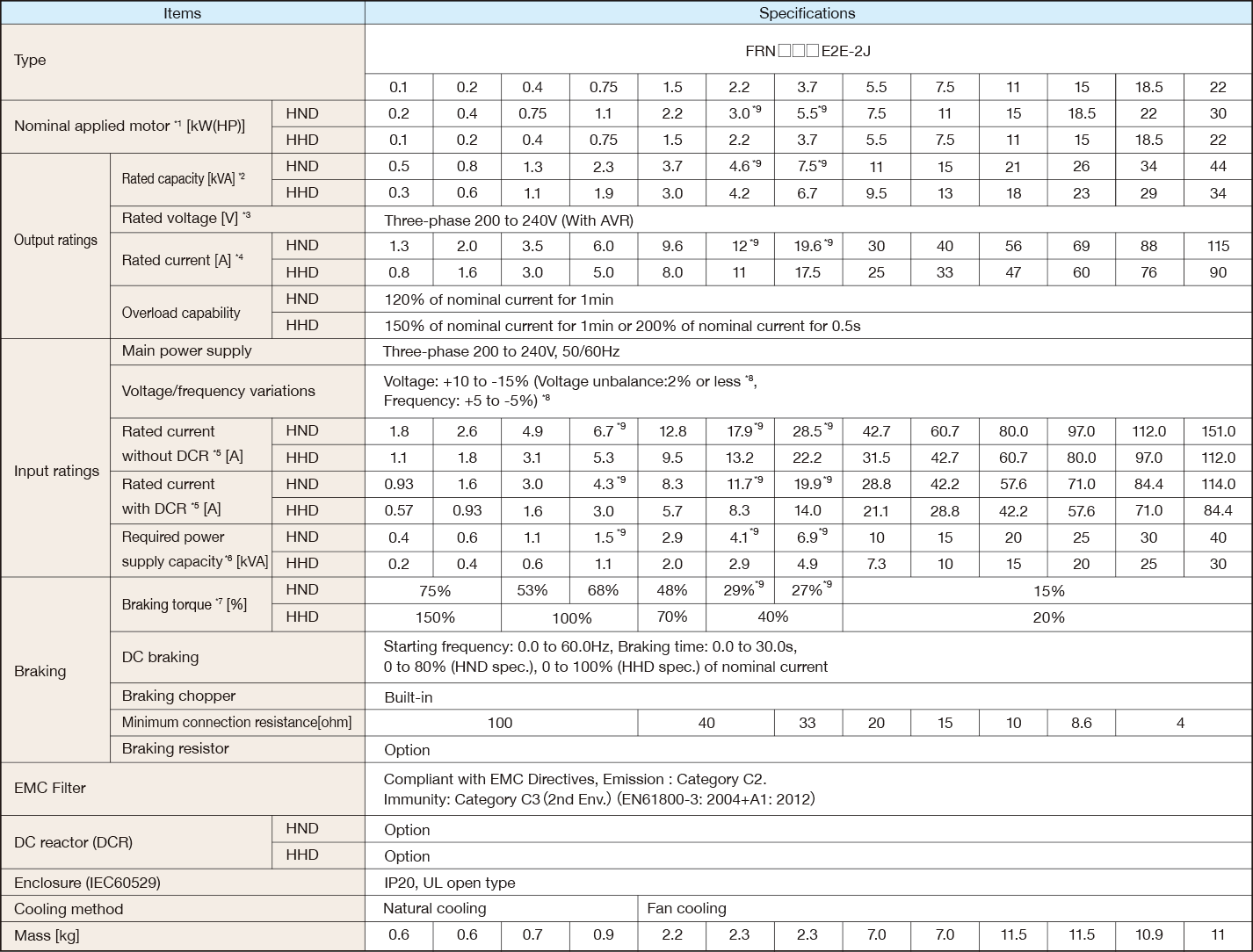
-
Note1
-
Fuji 4-pole standard motor
-
Note2
-
Rated capacity is calculated by assuming the output rated voltage as 220 V.
-
Note3
-
Output voltage cannot exceed the power supply voltage.
-
Note4
-
When the carrier frequency (F26) is set to below value or higher, the inverter is sure to be necessary to derate their nominal current.
HHD spec.---type 0001 to 0020 : 8kHz
HND spec.---type 0001 to 0020 : 4kHz
-
Note5
-
The value is calculated assuming that the inverter is connected with a power supply with the capacity of 500 kVA
(or 10 times the inverter capacity if the inverter capacity exceeds 50 kVA) and %X is 5%.
-
Note6
-
Obtained when a DC reactor (DCR) is used.
-
Note7
-
Average braking torque for the motor running alone. (It varies with the efficiency of the motor.)
-
Note8
-
Voltage unbalance (%) =(Max. voltage (V) - Min. voltage (V))/Three -phase average voltage (V) × 67 (IEC 61800 - 3)
If this value is 2 to 3%, use an optional AC reactor (ACR).
-
Note9
-
HND spec. of the type 0006, 0012 and 0020: allowable ambient temperature 40℃ (+104 °F) or less.
The rated output current at HND spec. is decreased 1% for every 1 ℃ (1.8 °F) when ambient temperature is +40℃ (+104 °F) or more.
-
Standard Specifications Three-phase 200V
Basic type (Three phase 200V)
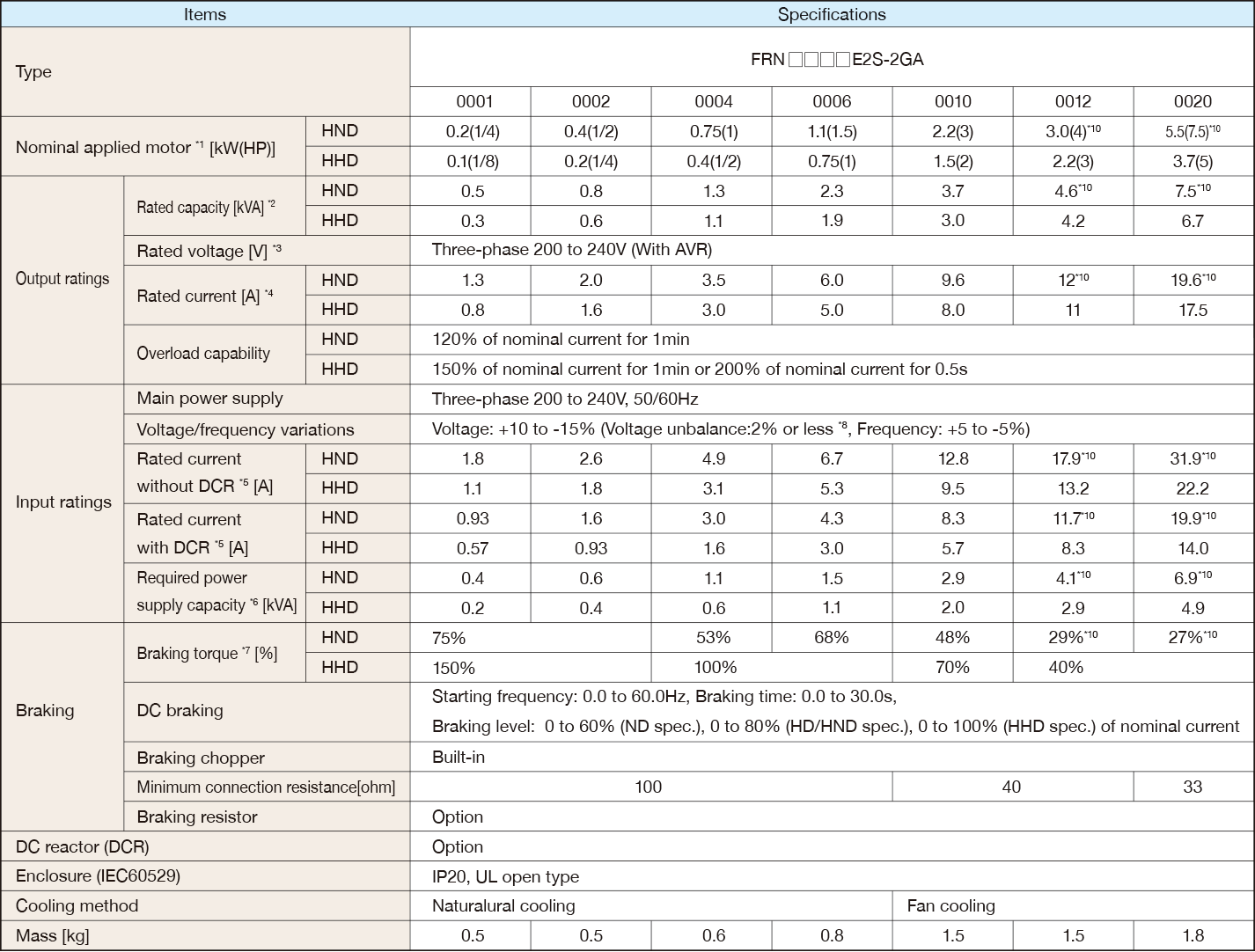
-
Note1
-
Fuji 4-pole standard motor. At the selection of the inverter rating, consider not only the rating capacity(kW) is enough but also inverter output current is larger than selected the motor's nominal current.
-
Note2
-
Rated capacity is calculated by assuming the output rated voltage as 220 V.
-
Note3
-
Output voltage cannot exceed the power supply voltage.
-
Note4
-
When the carrier frequency (F26) is set to below value or higher, the inverter is sure to be necessary to derate their nominal current. HHD spec.---type 0001 to 0020 : 8kHz, type 0030 to 0115 : 10kHz,
HND spec.---type 0001 to 0020 : 4kHz, type 0030 to 0069 : 10kHz, type 0088,0115 : 4kHz
-
Note5
-
The value is calculated assuming that the inverter is connected with a power supply with the capacity of 500 kVA
(or 10 times the inverter capacity if the inverter capacity exceeds 50 kVA) and %X is 5%.
-
Note6
-
Obtained when a DC reactor (DCR) is used.
-
Note7
-
Average braking torque for the motor running alone. (It varies with the efficiency of the motor.)
-
Note8
-
Voltage unbalance (%) =(Max. voltage (V) - Min. voltage (V))/Three -phase average voltage (V) × 67 (IEC 61800 - 3)
If this value is 2 to 3%, use an optional AC reactor (ACR).
-
Note10
-
HND spec. of the type 0012 and 0020: allowable ambient temperature 40 °C (+104 °F) or less.
The rated output current at HND spec. is decreased 1% for every 1 °C (1.8 °F) when ambient temperature is +40 °C (+104 °F) or more.
EMC Filter Built-in type (Three phase 200V)
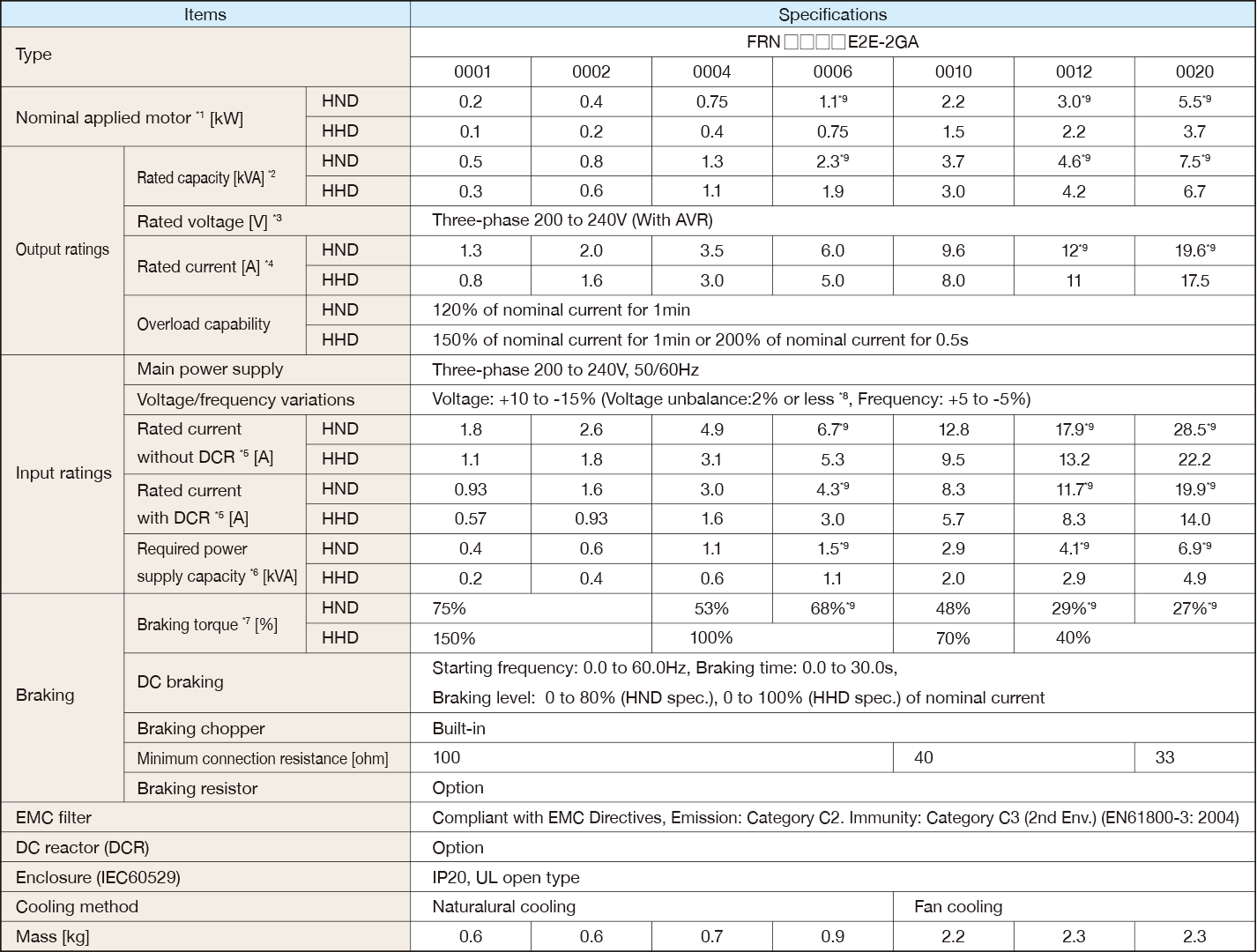
-
Note1
-
Fuji 4-pole standard motor
-
Note2
-
Rated capacity is calculated by assuming the output rated voltage as 220 V.
-
Note3
-
Output voltage cannot exceed the power supply voltage.
-
Note4
-
When the carrier frequency (F26) is set to below value or higher, the inverter is sure to be necessary to derate their nominal current.
HHD spec.---type 0001 to 0020 : 8kHz
HND spec.---type 0001 to 0020 : 4kHz
-
Note5
-
The value is calculated assuming that the inverter is connected with a power supply with the capacity of 500 kVA
(or 10 times the inverter capacity if the inverter capacity exceeds 50 kVA) and %X is 5%.
-
Note6
-
Obtained when a DC reactor (DCR) is used.
-
Note7
-
Average braking torque for the motor running alone. (It varies with the efficiency of the motor.)
-
Note8
-
Voltage unbalance (%) =(Max. voltage (V) - Min. voltage (V))/Three -phase average voltage (V) × 67 (IEC 61800 - 3)
If this value is 2 to 3%, use an optional AC reactor (ACR).
-
Note9
-
HND spec. of the type 0006, 0012 and 0020: allowable ambient temperature 40℃ (+104 °F) or less.
The rated output current at HND spec. is decreased 1% for every 1 ℃ (1.8 °F) when ambient temperature is +40℃ (+104 °F) or more.
-
Standard Specifications Three-phase 200V
Basic type (Three phase 200V)
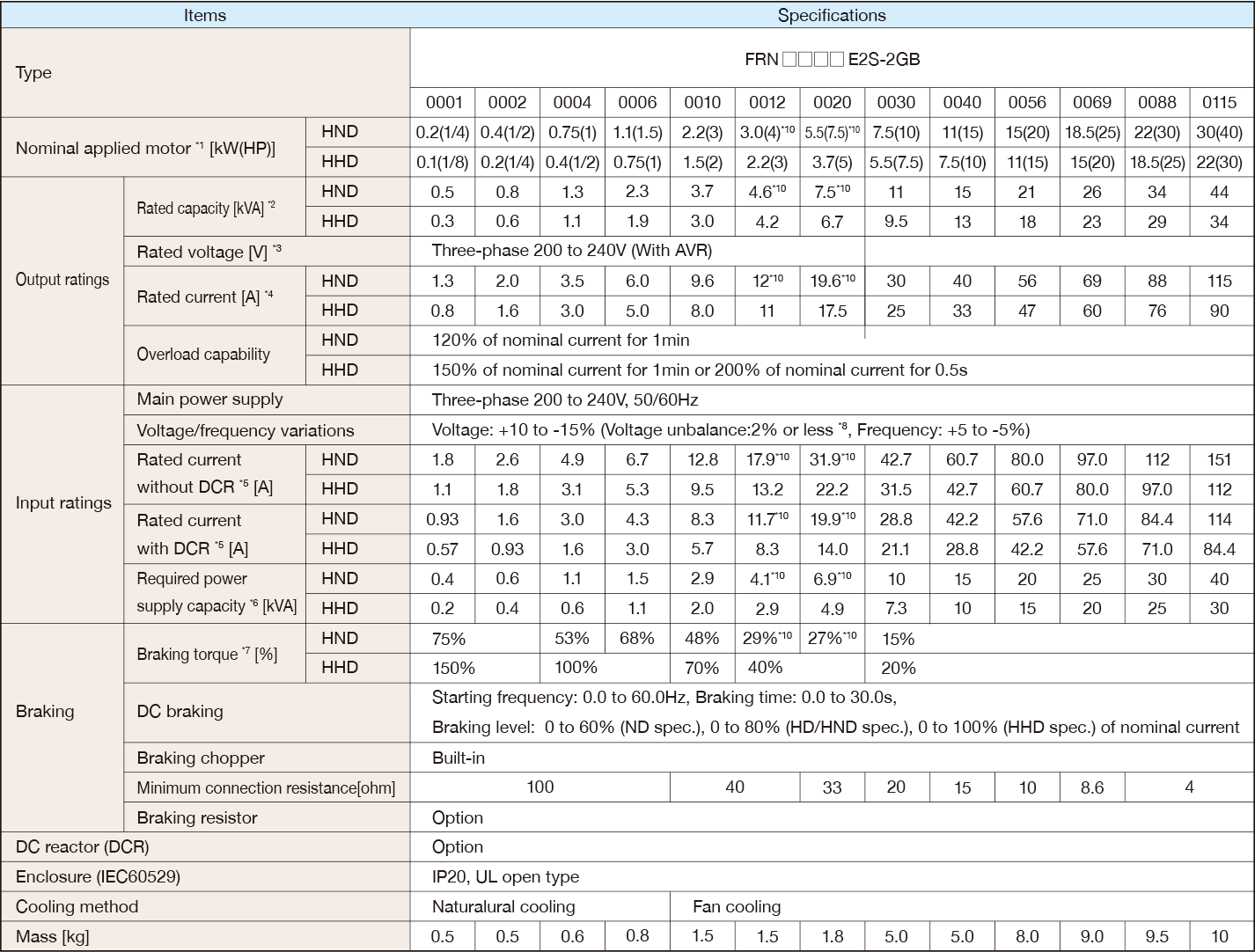
-
Note1
-
Fuji 4-pole standard motor. At the selection of the inverter rating, consider not only the rating capacity(kW) is enough but also inverter output current is larger than selected the motor's nominal current.
-
Note2
-
Rated capacity is calculated by assuming the output rated voltage as 220 V.
-
Note3
-
Output voltage cannot exceed the power supply voltage.
-
Note4
-
When the carrier frequency (F26) is set to below value or higher, the inverter is sure to be necessary to derate their nominal current.
HHD spec.---type 0001 to 0020 : 8kHz, type 0030 to 0115 : 10kHz,
HND spec.---type 0001 to 0020 : 4kHz, type 0030 to 0069 : 10kHz, type 0088,0115 : 4kHz
-
Note5
-
The value is calculated assuming that the inverter is connected with a power supply with the capacity of 500 kVA
(or 10 times the inverter capacity if the inverter capacity exceeds 50 kVA) and %X is 5%.
-
Note6
-
Obtained when a DC reactor (DCR) is used.
-
Note7
-
Average braking torque for the motor running alone. (It varies with the efficiency of the motor.)
-
Note8
-
Voltage unbalance (%) =(Max. voltage (V) - Min. voltage (V))/Three -phase average voltage (V) × 67 (IEC 61800 - 3)
If this value is 2 to 3%, use an optional AC reactor (ACR).
-
Note10
-
HND spec. of the type 0012 and 0020: allowable ambient temperature 40 °C (+104 °F) or less.
The rated output current at HND spec. is decreased 1% for every 1 °C (1.8 °F) when ambient temperature is +40 °C (+104 °F) or more.
-
Standard Specifications Three-phase 200V
This type is not available in this region.
If you need more information for this products, please contact us through the inquiry form.
-
Standard Specifications Three-phase 200V
Basic type (Three phase 200V)
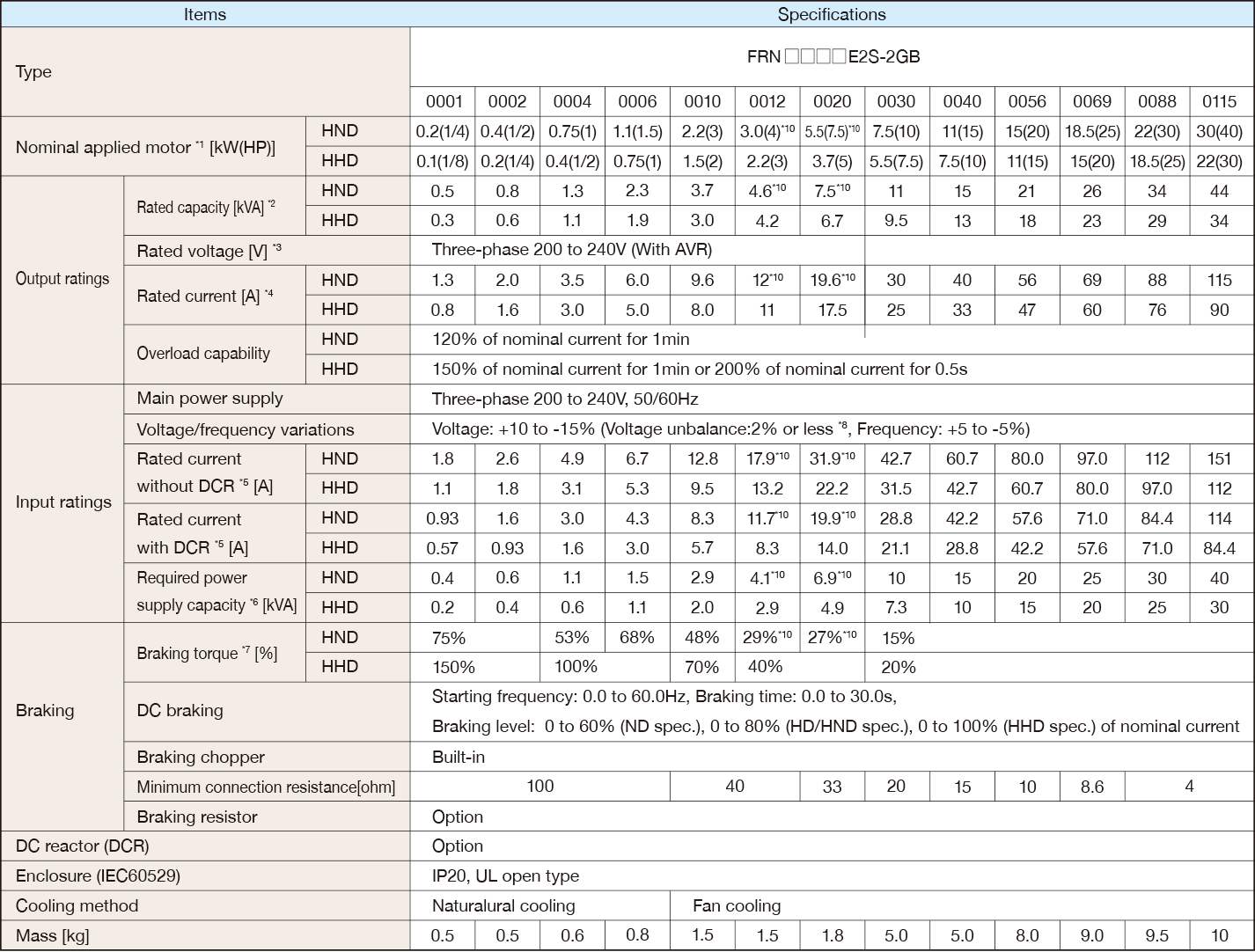
-
Note1
-
Fuji 4-pole standard motor. At the selection of the inverter rating, consider not only the rating capacity(kW) is enough but also inverter output current is larger than selected the motor's nominal current.
-
Note2
-
Rated capacity is calculated by assuming the output rated voltage as 220 V.
-
Note3
-
Output voltage cannot exceed the power supply voltage.
-
Note4
-
When the carrier frequency (F26) is set to below value or higher, the inverter is sure to be necessary to derate their nominal current.
HHD spec.---type 0001 to 0020 : 8kHz, type 0030 to 0115 : 10kHz,
HND spec.---type 0001 to 0020 : 4kHz, type 0030 to 0069 : 10kHz, type 0088,0115 : 4kHz
-
Note5
-
The value is calculated assuming that the inverter is connected with a power supply with the capacity of 500 kVA
(or 10 times the inverter capacity if the inverter capacity exceeds 50 kVA) and %X is 5%.
-
Note6
-
Obtained when a DC reactor (DCR) is used.
-
Note7
-
Average braking torque for the motor running alone. (It varies with the efficiency of the motor.)
-
Note8
-
Voltage unbalance (%) =(Max. voltage (V) - Min. voltage (V))/Three -phase average voltage (V) × 67 (IEC 61800 - 3)
If this value is 2 to 3%, use an optional AC reactor (ACR).
-
Note10
-
HND spec. of the type 0012 and 0020: allowable ambient temperature 40 °C (+104 °F) or less.
The rated output current at HND spec. is decreased 1% for every 1 °C (1.8 °F) when ambient temperature is +40 °C (+104 °F) or more.
EMC Filter Built-in type (Three phase 200V)
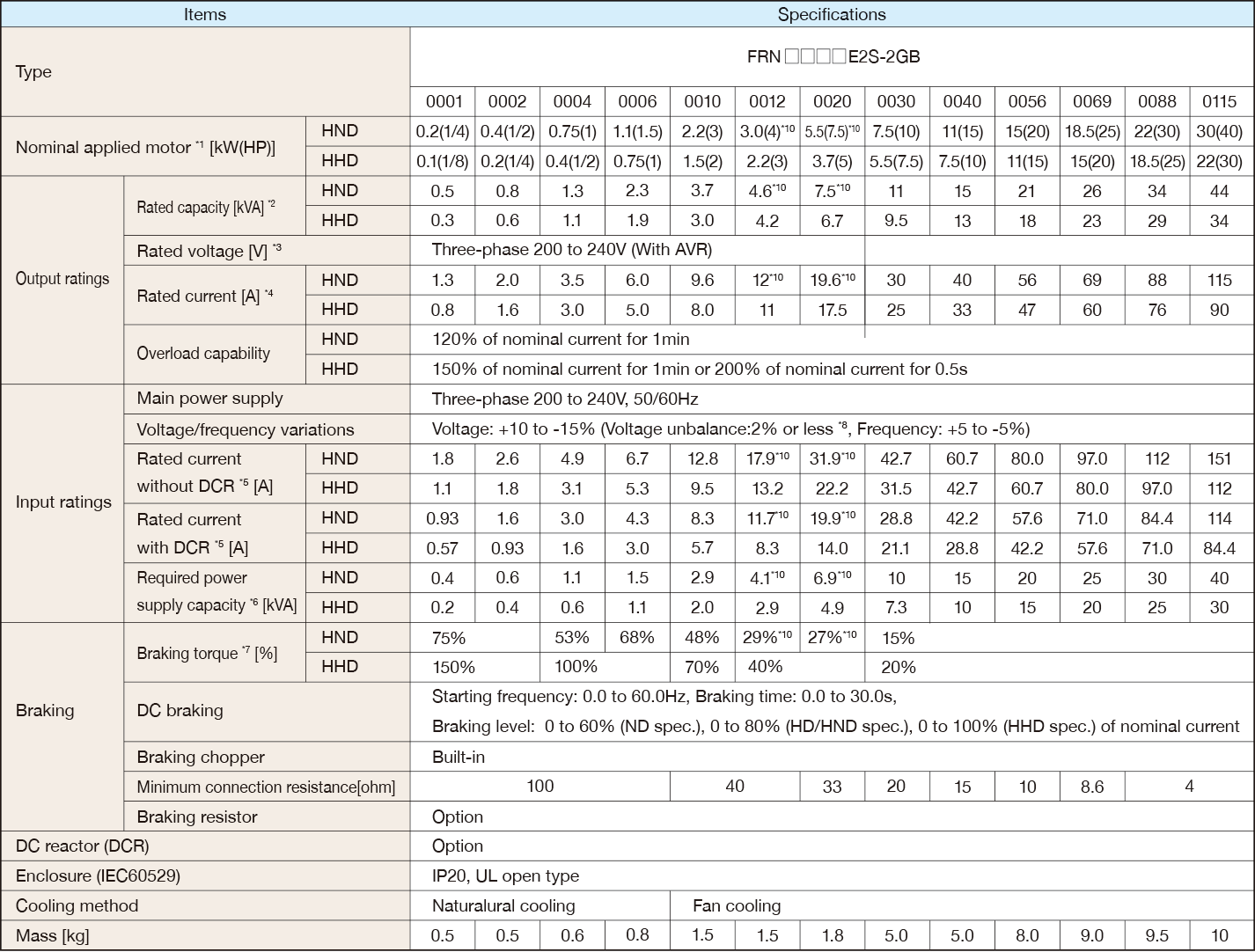
-
Note1
-
Fuji 4-pole standard motor
-
Note2
-
Rated capacity is calculated by assuming the output rated voltage as 220 V.
-
Note3
-
Output voltage cannot exceed the power supply voltage.
-
Note4
-
When the carrier frequency (F26) is set to below value or higher, the inverter is sure to be necessary to derate their nominal current.
HHD spec.---type 0001 to 0020 : 8kHz
HND spec.---type 0001 to 0020 : 4kHz
-
Note5
-
The value is calculated assuming that the inverter is connected with a power supply with the capacity of 500 kVA
(or 10 times the inverter capacity if the inverter capacity exceeds 50 kVA) and %X is 5%.
-
Note6
-
Obtained when a DC reactor (DCR) is used.
-
Note7
-
Average braking torque for the motor running alone. (It varies with the efficiency of the motor.)
-
Note8
-
Voltage unbalance (%) =(Max. voltage (V) - Min. voltage (V))/Three -phase average voltage (V) × 67 (IEC 61800 - 3)
If this value is 2 to 3%, use an optional AC reactor (ACR).
-
Note9
-
HND spec. of the type 0006, 0012 and 0020: allowable ambient temperature 40℃ (+104 °F) or less.
The rated output current at HND spec. is decreased 1% for every 1 ℃ (1.8 °F) when ambient temperature is +40℃ (+104 °F) or more.
-
Standard Specifications Three-phase 200V
Basic type (Three phase 200V)
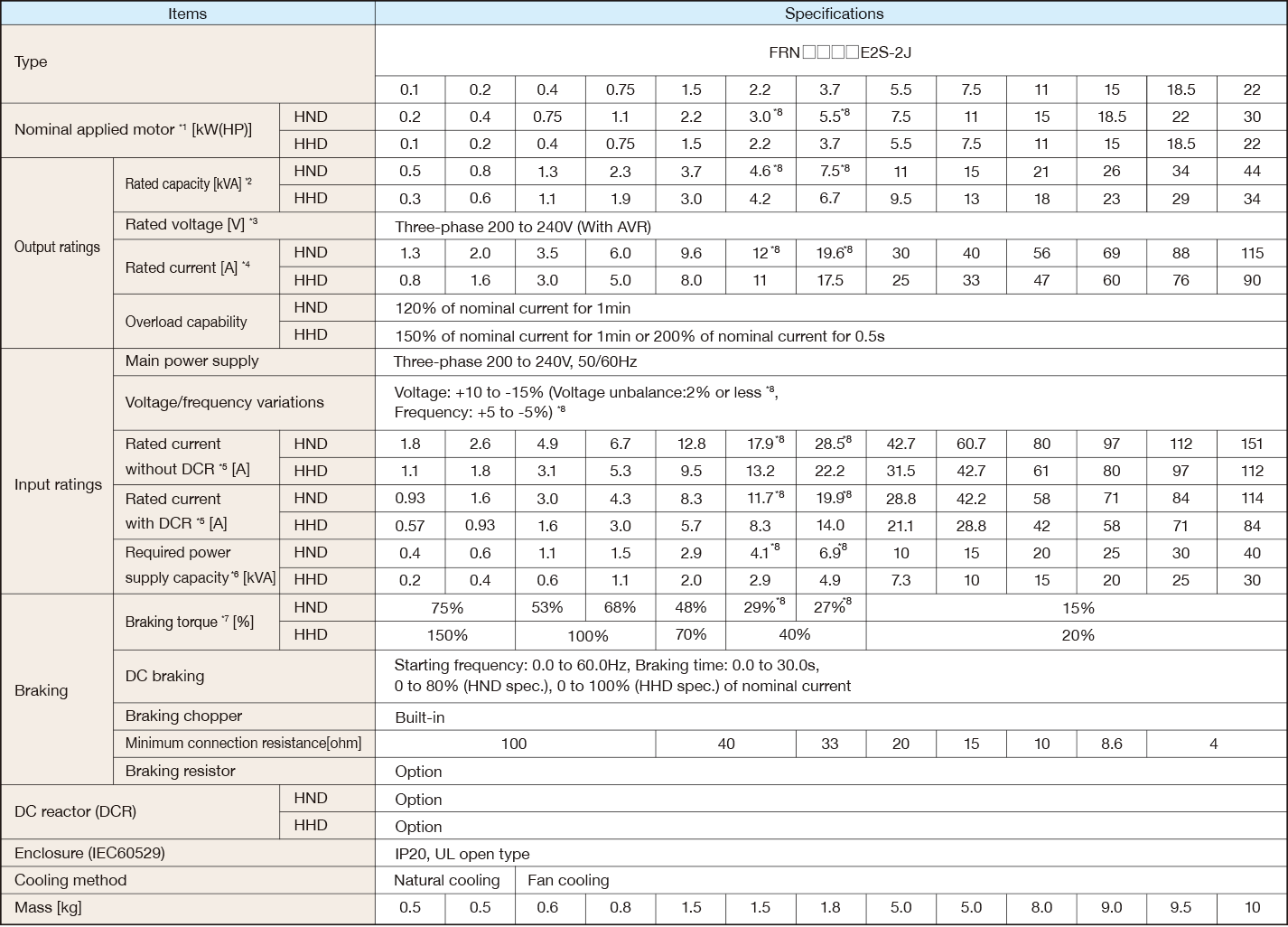
-
Note1
-
Fuji 4-pole standard motor. At the selection of the inverter rating, consider not only the rating capacity(kW) is enough but also inverter output current is larger than selected the motor's nominal current.
-
Note2
-
Rated capacity is calculated by assuming the output rated voltage as 220 V.
-
Note3
-
Output voltage cannot exceed the power supply voltage.
-
Note4
-
When the carrier frequency (F26) is set to below value or higher, the inverter is sure to be necessary to derate their nominal current.
HHD spec.---type 0001 to 0020 : 8kHz, type 0030 to 0115 : 10kHz,
HND spec.---type 0001 to 0020 : 4kHz, type 0030 to 0069 : 10kHz, type 0088,0115 : 4kHz
-
Note5
-
The value is calculated assuming that the inverter is connected with a power supply with the capacity of 500 kVA
(or 10 times the inverter capacity if the inverter capacity exceeds 50 kVA) and %X is 5%.
-
Note6
-
Obtained when a DC reactor (DCR) is used.
-
Note7
-
Average braking torque for the motor running alone. (It varies with the efficiency of the motor.)
-
Note8
-
Voltage unbalance (%) =(Max. voltage (V) - Min. voltage (V))/Three -phase average voltage (V) × 67 (IEC 61800 - 3)
If this value is 2 to 3%, use an optional AC reactor (ACR).
-
Note9
-
HND spec. of the type 0012 and 0020: allowable ambient temperature 40 °C (+104 °F) or less.
The rated output current at HND spec. is decreased 1% for every 1 °C (1.8 °F) when ambient temperature is +40 °C (+104 °F) or more.
EMC Filter Built-in type (Three phase 200V)
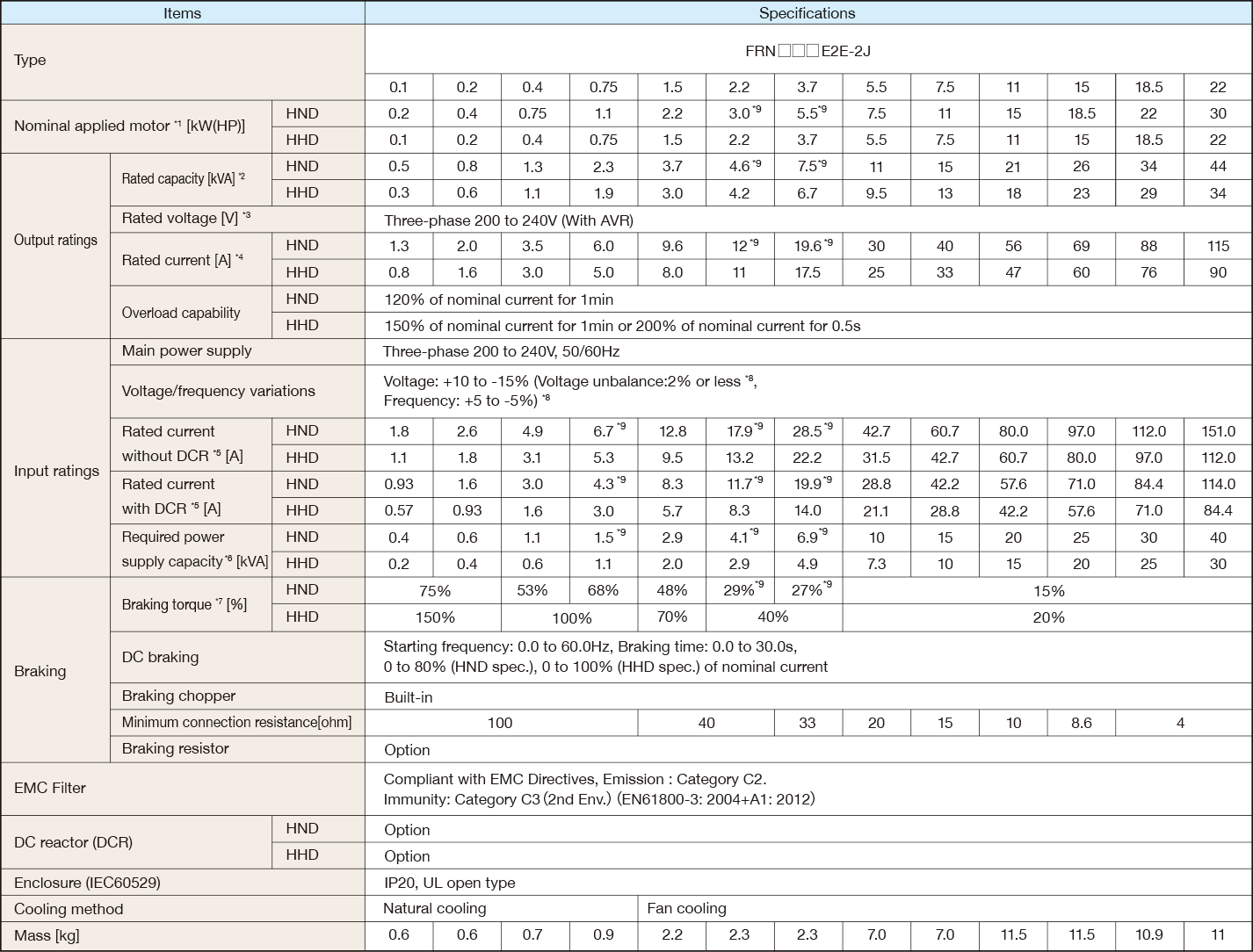
-
Note1
-
Fuji 4-pole standard motor
-
Note2
-
Rated capacity is calculated by assuming the output rated voltage as 220 V.
-
Note3
-
Output voltage cannot exceed the power supply voltage.
-
Note4
-
When the carrier frequency (F26) is set to below value or higher, the inverter is sure to be necessary to derate their nominal current.
HHD spec.---type 0001 to 0020 : 8kHz
HND spec.---type 0001 to 0020 : 4kHz
-
Note5
-
The value is calculated assuming that the inverter is connected with a power supply with the capacity of 500 kVA
(or 10 times the inverter capacity if the inverter capacity exceeds 50 kVA) and %X is 5%.
-
Note6
-
Obtained when a DC reactor (DCR) is used.
-
Note7
-
Average braking torque for the motor running alone. (It varies with the efficiency of the motor.)
-
Note8
-
Voltage unbalance (%) =(Max. voltage (V) - Min. voltage (V))/Three -phase average voltage (V) × 67 (IEC 61800 - 3)
If this value is 2 to 3%, use an optional AC reactor (ACR).
-
Note9
-
HND spec. of the type 0006, 0012 and 0020: allowable ambient temperature 40℃ (+104 °F) or less.
The rated output current at HND spec. is decreased 1% for every 1 ℃ (1.8 °F) when ambient temperature is +40℃ (+104 °F) or more.
-
Standard Specifications Three-phase 200V
Basic type (Three phase 200V)
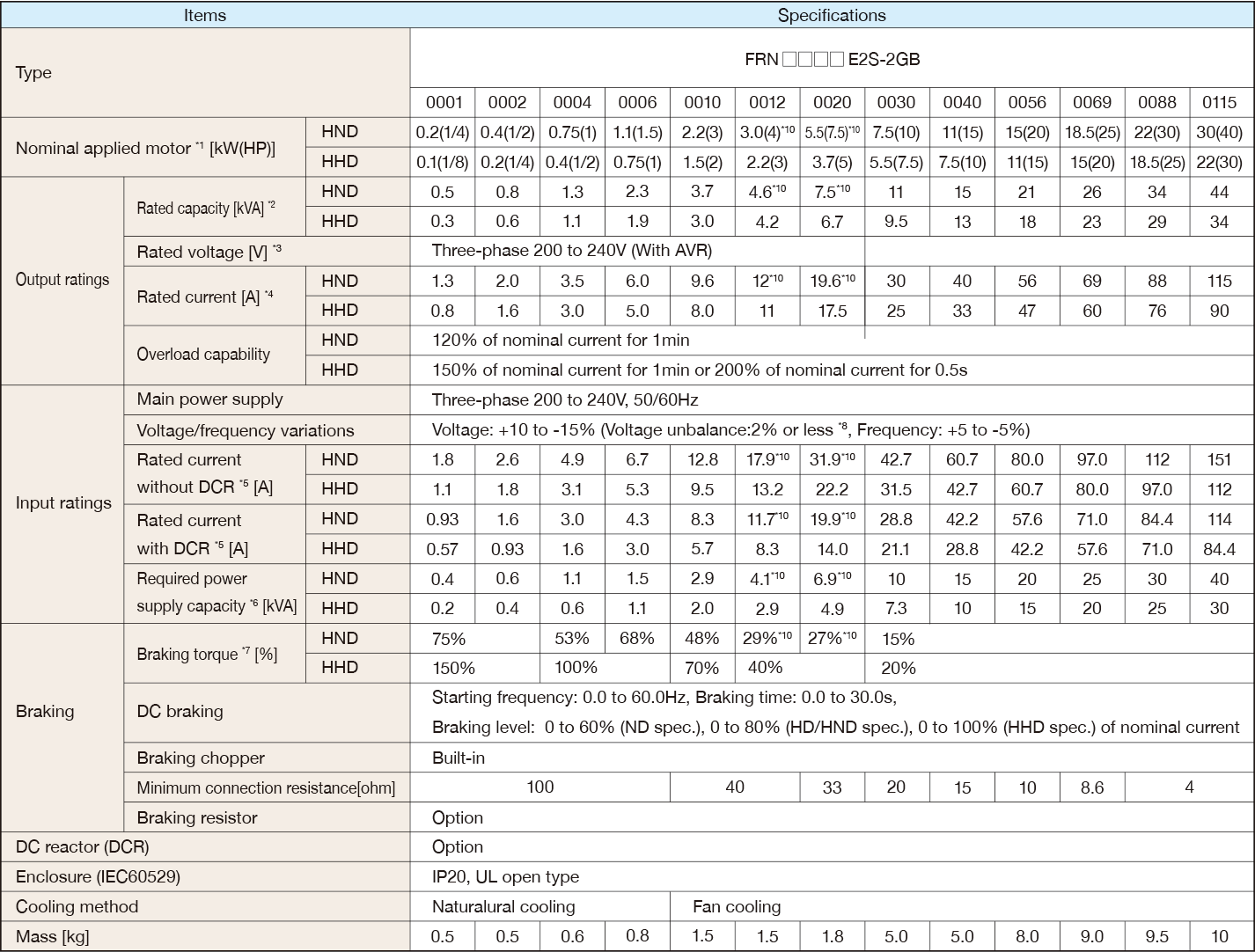
-
Note1
-
Fuji 4-pole standard motor. At the selection of the inverter rating, consider not only the rating capacity(kW) is enough but also inverter output current is larger than selected the motor's nominal current.
-
Note2
-
Rated capacity is calculated by assuming the output rated voltage as 220 V.
-
Note3
-
Output voltage cannot exceed the power supply voltage.
-
Note4
-
When the carrier frequency (F26) is set to below value or higher, the inverter is sure to be necessary to derate their nominal current.
HHD spec.---type 0001 to 0020 : 8kHz, type 0030 to 0115 : 10kHz,
HND spec.---type 0001 to 0020 : 4kHz, type 0030 to 0069 : 10kHz, type 0088,0115 : 4kHz
-
Note5
-
The value is calculated assuming that the inverter is connected with a power supply with the capacity of 500 kVA
(or 10 times the inverter capacity if the inverter capacity exceeds 50 kVA) and %X is 5%.
-
Note6
-
Obtained when a DC reactor (DCR) is used.
-
Note7
-
Average braking torque for the motor running alone. (It varies with the efficiency of the motor.)
-
Note8
-
Voltage unbalance (%) =(Max. voltage (V) - Min. voltage (V))/Three -phase average voltage (V) × 67 (IEC 61800 - 3)
If this value is 2 to 3%, use an optional AC reactor (ACR).
-
Note10
-
HND spec. of the type 0012 and 0020: allowable ambient temperature 40 °C (+104 °F) or less.
The rated output current at HND spec. is decreased 1% for every 1 °C (1.8 °F) when ambient temperature is +40 °C (+104 °F) or more.

